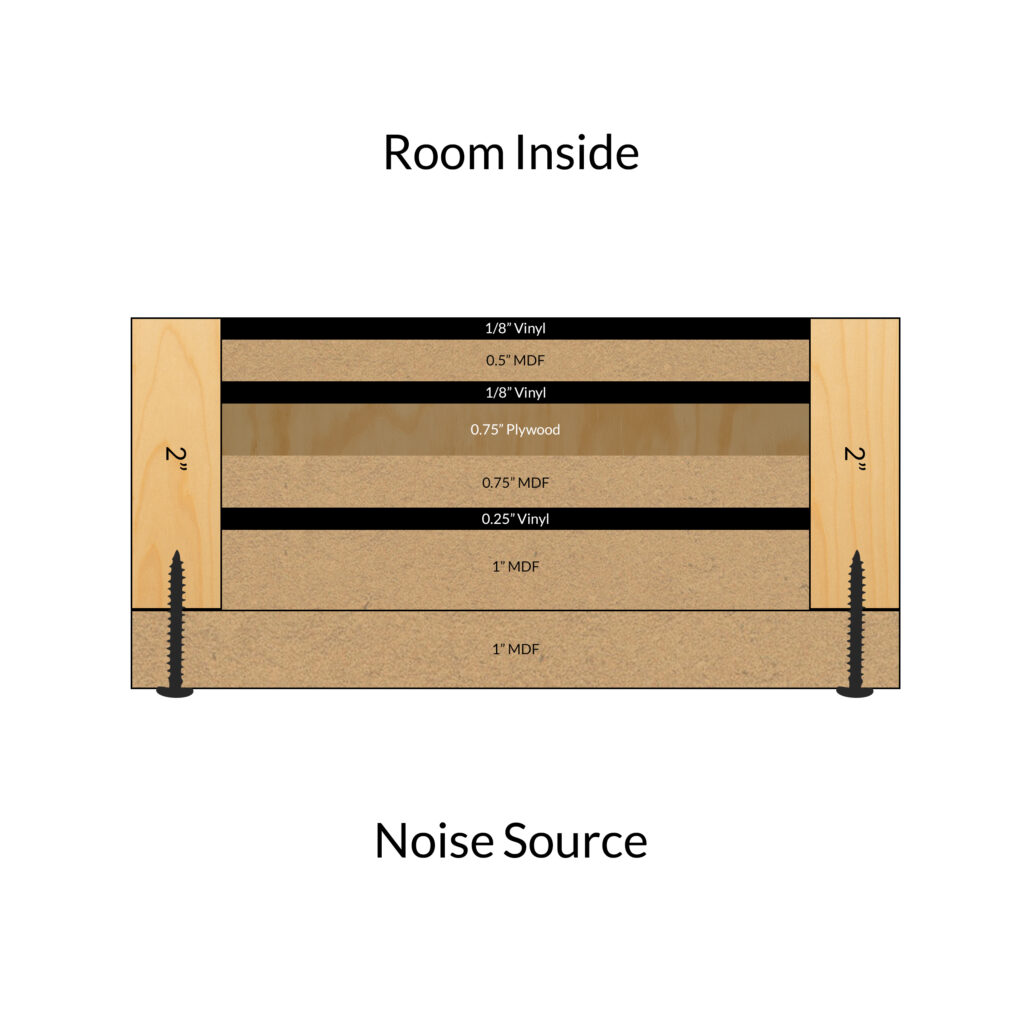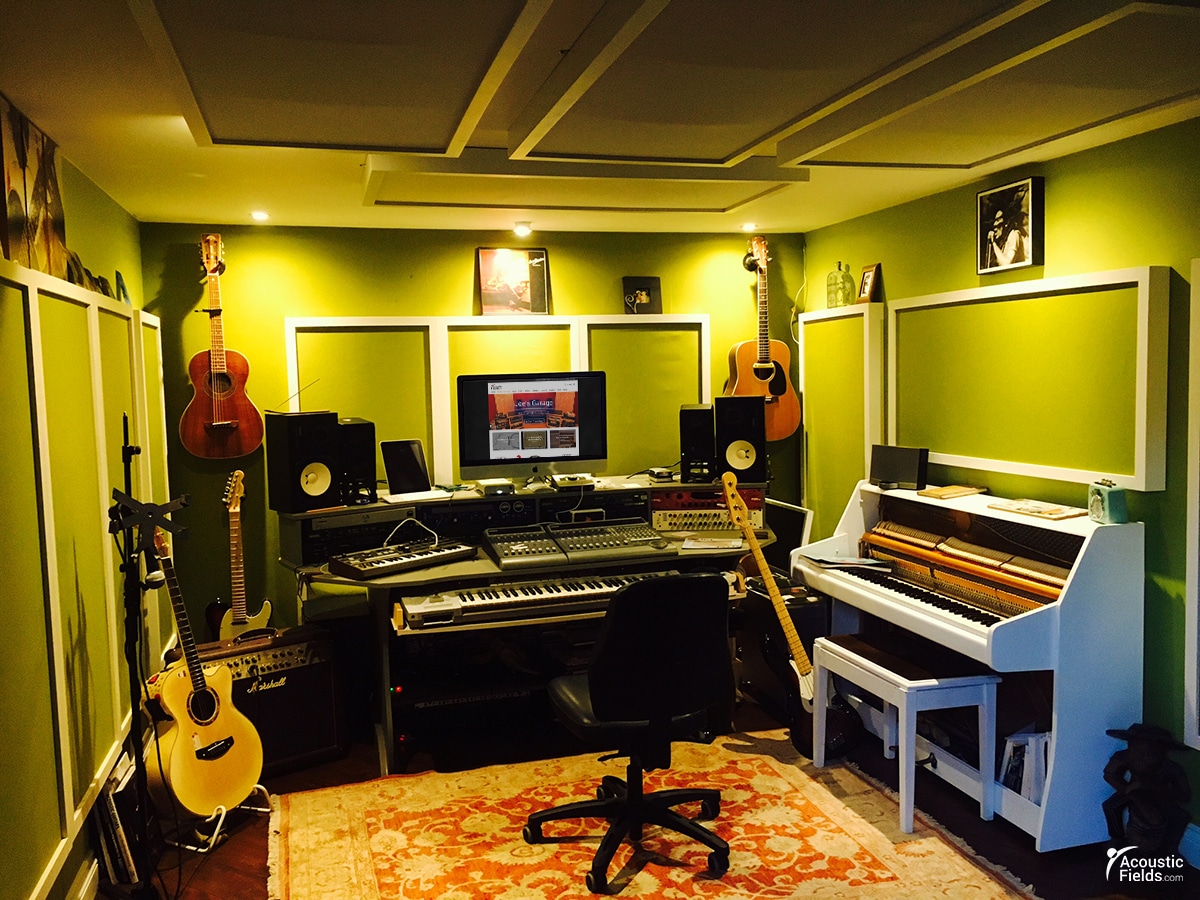Table of Contents

Start with a Noise Management Strategy
The answers to the search phrase how to build a home studio must first start with a strategy. How to build a home studio depends on the amount of noise we are trying to keep from coming into our room and how much noise is leaving our room. When building a budget on how to build a home studio, we must first start with noise transmission. We must have a quiet room to work within.
You can have all the highest quality gear in the world but if your room is too noisy to work within, gear resolution means nothing when it comes to resolving noise issues. How to build a home studio must start with the noise transmission issues first and foremost. You must build a barrier that is designed to attenuate the frequency and amplitude of the measured noise issues that you have. At Acoustic Fields, we have a noise measuring process that you can use by downloading apps from us on your phone.

Understanding Noise Frequencies and Amplitudes
All noise is divided into frequencies and amplitudes. The frequency is where that noise is positioned on the human hearing audible spectrum. The amplitude is the strength of each frequency of noise. Lower frequency noise is much more costly to manage than middle and high frequency noise. Noise frequencies that are below 125 hz. require much more mass or density and density costs money. All barrier technologies must be incorporated into a permanent construction build. There are no wall hanging units that will stop noise.
When you are visualizing a barrier you need to think of your room as a boat that you are building to place into the ocean. It must be strong enough to withstand the pressure of the ocean waves and secondly, it can not leak. With a proper barrier design you will be building a new room inside your existing room or if building from scratch and the ground up, the design of the barrier or walls will depend on the frequency and amplitude of the noise.

Measuring Noise for Effective Barrier Design
With noise we must measure any noise issue over a seven day time period. We want to take two measurements per day. We will take one measurement during the quietest part of the day and another measurement during the loudest part of each day. With our process, we send you an app to download on your phone. You follow our instructions and take noise readings twice a day.
You will take one measurement during the quietest part of each day along with the loudest time of each day. You record the frequency and amplitude readings on our on line data sheet. You return the data sheet to us and we then analyze the data and send you a drawing on what barrier you need to build to combat your specific measured noise.

Analyzing Noise Data for Customized Solutions
Once you have taken your noise measurements we will see where the noise lives on the human hearing scale. Noise that lives below 125 hz. will require a different barrier type than noise that is measured above 125 hz. Most voice issues lie above 125 hz. and voice requires a barrier that is less dense and takes up less space. Lower frequency wave energy is long and tall waves of energy that require mass and density to attenuate.
Stopping the garbage truck that comes down the alley at 6 am is much more difficult to treat than the voices from downstairs. This is why it is so critical to measure the noise frequency and amplitudes before you build any barrier type. If you build the wrong barrier, you will have to tear it down and start all over again. With noise, you do not want to spend one dollar more than you have to since all barrier designs are a permanent construction fix. There are no wall hanging panels that will stop noise.

Building Effective Barriers for Different Noise Types
When you are searching for how to build a home studio you must first focus on the noise transmission issues. After you have measured the noise and constructed the appropriate barrier, you are now ready to treat the energy that you will create inside the room. You will have two options for treatment. You can use absorption to treat the lower frequency issues. You can use a combination of absorption and diffusion to treat the middle and high frequencies.
The room dimensions will determine what frequencies of distortion you will have inside the room. Your usage will determine how large of a problem you will have with those issues. Typically, the more energy placed within the room the more issues you will have. Lower frequency issues require up to 12″ of space to treat and middle and high frequency issues can take 4″ – 6″ to treat. With new builds, you can build the low frequency treatment into the walls using our CAW process.







